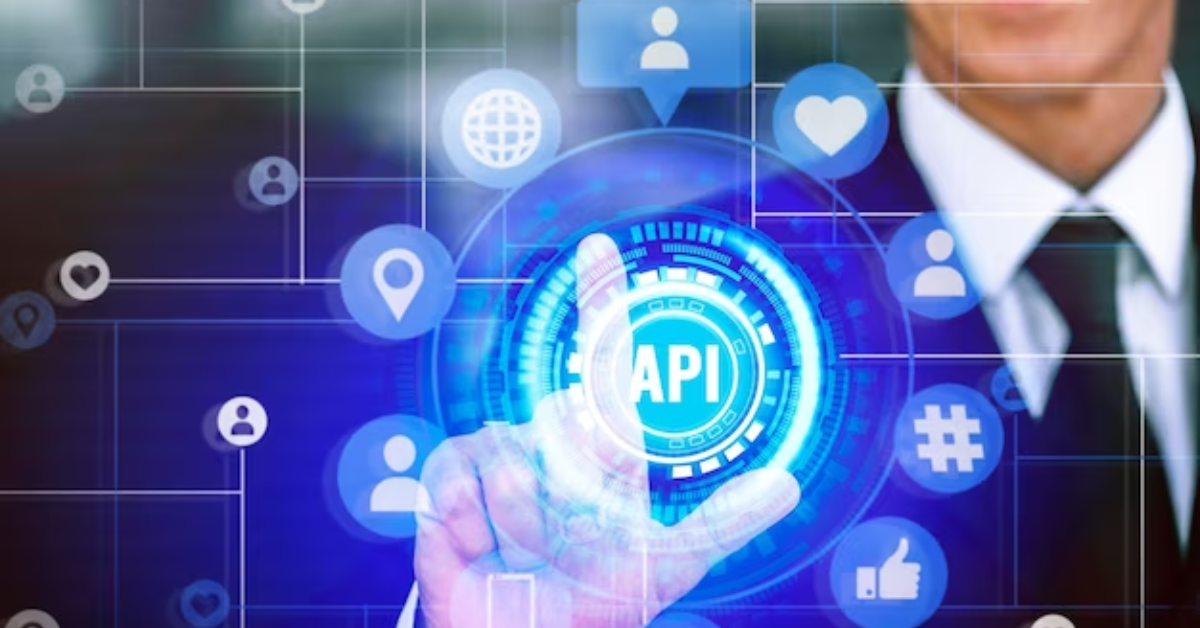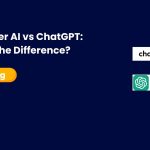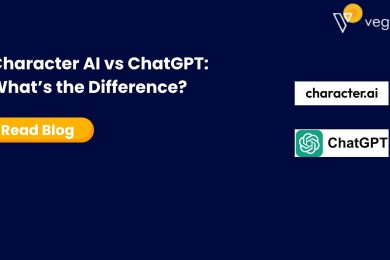
Artificial intelligence (AI) and blockchain are two of the most transformative technologies of our time. Though emerging independently, they stand to amplify each other’s impacts when combined.
AI refers to machines simulating human intelligence to perform tasks and make decisions. It relies on accessing large datasets to continuously learn and improve. Blockchain is a decentralized ledger technology that establishes trust, accountability, and transparency. It allows for secure data storage and exchange without a central authority.
Integrating AI with blockchain unleashes new possibilities. Blockchain provides the ideal infrastructure for sharing AI models and data. It facilitates the decentralized control of AI systems, making them more robust and tamper-proof. Meanwhile, AI can enhance blockchain for better scalability, automation, and predictive analytics.
Together, AI and blockchain can enable breakthroughs across industries like finance, healthcare, transportation, and more. Exciting innovations are already emerging from projects at the intersection of these technologies.
This article will explore 5 leading companies using AI-based blockchain applications and platforms. For each project, we will look at their key features, target applications, and the real-world problems they aim to solve. Understanding these initiatives provides a window into how AI and blockchain convergence will shape the future.
Benefits Of AI And Blockchain
Blockchain and artificial intelligence are two of the most talked about technologies today. Combining them together leads to some powerful synergies that can transform industries. Here are some of the key benefits of integrating AI with blockchain:
Improved Security
Blockchain provides decentralized, distributed ledgers that are highly secure and immutable. AI adds an extra layer of protection through techniques like anomaly detection and predictive analytics. This allows AI systems on blockchains to identify suspicious activities and vulnerabilities proactively.
Increased Efficiency
AI algorithms can optimize complex processes and reduce costs. For example, supply chains can leverage AI to route products in the most efficient ways. Smart contracts on blockchains add automation without middlemen. Overall, AI enhances productivity and cuts waste.
Advanced Automation
AI empowers automation at new levels. Machine learning models can handle dynamic, real-world situations. Along with smart contracts, AI enables automation of entire workflows. This reduces the need for human intervention in processes. The combination leads to major gains in speed, accuracy and transparency.
Together, these benefits allow for disruptive new decentralized applications across many industries including finance, healthcare, transportation and more. The synergy between AI and blockchain holds exciting potential.
Project 1: SingularityNET
SingularityNET is an AI marketplace and decentralized protocol built on blockchain technology. The goal is to democratize access to AI technology and services through an open market.
Some key features and capabilities of SingularityNET include:
- AI Agents – Independent AI programs can be published on the network as “AI Agents” to provide services like image recognition, translations, data analysis, etc. There is an Agent reputation system to help evaluate quality.
- AI Marketplace – The marketplace connects buyers to AI agents. Services can be purchased using SingularityNET’s AGI token. This creates an ecosystem for exchanging AI tech and services.
- Decentralized Network – The platform is decentralized using blockchain tools like smart contracts. This removes centralized control over the AI agents.
- AI Services – SingularityNET provides a range of AI services out of the box, including biomedical research, finance, social, education, simulation, infrastructure agents and more.
- Democratized AI – By creating an open market, SingularityNET aims to make AI more accessible and beneficial for all. Anyone can monetize or utilize AI tech on the network.
The goal of SingularityNET is to become the key protocol for AI services and to make AI more open, decentralized, useful, and safe. The marketplace structure and blockchain foundation offers significant advantages.
Project 2: Numerai
Numerai is a decentralized AI network built on Ethereum. It allows anyone to contribute machine learning models to help predict the stock market. The key goal of the project is to build more accurate AI models by combining predictions from thousands of data scientists.
Some key capabilities and features of Numerai include:
- Crowdsourced approach – Numerai allows thousands of anonymous data scientists to build machine-learning models that make stock market predictions. By combining many models, accuracy improves over any single model.
- Ethereum-based – Models and data scientists are rewarded with Numeraire (NMR) tokens on Ethereum for contributing accurate predictions. This introduces incentives and anonymity through cryptocurrency payments.
- Encrypted data – To prevent gaming the system, the underlying financial data used for modeling is encrypted. This means even though all the models are public, the data can’t be reverse-engineered.
- Weekly competitions – Data scientists compete in weekly competitions to build the most accurate models according to a public leaderboard. The most accurate models are merged into the primary model behind Numerai’s predictions.
- Hedging fund – The predictions generated are used by a hedge fund to place trades in the stock market. Profits from the fund are used to purchase and burn NMR tokens, increasing their value.
So in summary, Numerai leverages blockchain, encryption, and AI incentives to build crowdsourced machine learning models for stock market predictions. It represents a new AI/blockchain approach to quantitative finance.
Project 3: Matrix AI Network
The Matrix AI Network leverages AI and blockchain technology to enable smarter blockchain networks. The project was founded in 2017 and aims to create an intelligent blockchain that can make autonomous decisions.
The Matrix AI Network has developed an AI-powered system called the MATRIX AI Network Intelligent Contracts and AI Services. These enable smart contracts on the blockchain to utilize artificial intelligence to autonomously operate.
Some key capabilities of the Matrix AI Network include:
- Natural Language Smart Contracts: Allows smart contracts to be created using natural language instead of code. This makes smart contract creation more accessible.
- AI-Powered Dynamic Optimization: The network can dynamically optimize resource allocation to improve efficiency. For example, transactions can be routed in an optimal way.
- Intelligent Consensus Mechanism: An adaptive consensus mechanism called Proof of Stake and Trust (PoST) that aims to achieve faster transaction speeds.
- AI Protection Against Attacks: Matrix has capabilities to detect attacks using AI and can take actions to mitigate risks and exploits.
The Matrix AI Network is still in the early stages but shows promise in using AI to create more intelligent and optimal blockchain networks. The project aims to develop a secure, self-optimizing infrastructure for AI development and deployment.
Project 4: Effect.AI
Effect.AI is a decentralized network for artificial intelligence and machine learning. It aims to democratize access to AI and enable anyone to train, build, and run AI services.
Overview And Key Capabilities
Effect.AI operates on top of the NEO blockchain. It allows anyone to contribute computing power, data sets, and algorithms to a decentralized pool. Users can then tap into this pool to train AI models and build services.
Some key capabilities and features of Effect.AI include:
- Decentralized AI marketplace – Anyone can offer or request AI services like image recognition, speech processing, predictions, etc on the network. Services are matched between providers and requesters.
- Effect Force – This is a distributed workforce of human labelers who can annotate data sets to train AI models. Their contributions are rewarded with Effect tokens.
- Effect Smart Market – An open market for buying and selling data sets, algorithms, models, and more. Participants can exchange AI assets and services.
- Distributed computing power – The network pools spare computing resources from participants to run AI workloads. This provides the processing power to train models.
- Token rewards – Participants earn EFX tokens for contributing computing resources, data labeling, models, or for completing tasks. Tokens incentivize the network.
- NEO integration – Effect.AI utilizes the NEO blockchain for security, identity management, and payments via NEO and Gas tokens.
Overall, Effect.AI wants to make AI accessible and democratize its capabilities and benefits through a decentralized model. The collective contributions of network participants are leveraged to offer AI services.
Project 5: DeepBrain Chain
DeepBrain Chain is an artificial intelligence computing platform that leverages blockchain technology. The goal of DeepBrain Chain is to provide a decentralized neural network that can lower the cost of AI computing.
Overview and Key Capabilities Of Blockchain
DeepBrain Chain uses blockchain technology to connect mining machines and their spare computing power into a decentralized artificial intelligence computing platform. This allows anyone to rent computing power for their AI needs, providing an open and collaborative marketplace.
Some key capabilities and features of DeepBrain Chain include:
- Decentralized computing power – The network pools together mining machines to offer affordable and scalable GPU computing power for deep learning and AI.
- Lower costs – By tapping into idle mining resources, costs for access to computing power are reduced by 70%. This makes AI more accessible.
- Data privacy – Sensitive data can be kept private and secure through the use of encryption and blockchain techniques.
- Support for AI models – The platform can run deep neural network models and algorithms to train AI systems.
- DBC tokens – The native DBC token incentivizes participants and compensates resource providers on the network.
- Distributed AI marketplace – The open marketplace allows anyone to rent computing power and develop AI applications.
Overall, DeepBrain Chain brings the benefits of decentralization through blockchain to provide an open and low-cost platform for artificial intelligence computing power. Its model uses an innovative approach to lower barriers to entry for AI development.
Current Challenges
Combining AI and blockchain technology comes with several challenges that need to be addressed as these projects continue to develop.
Data Privacy
One major concern is around data privacy. AI models require large amounts of data to train on. However, the transparency of blockchains means that any data on them is visible. This presents a challenge in protecting sensitive personal data while still allowing AI models to access the data they need. Projects need to find ways to anonymize data or implement selective privacy without compromising the openness of blockchains.
Implementation Complexity
There is also considerable complexity in integrating AI algorithms with blockchain architectures. The original design of blockchains did not incorporate support for AI processing. The computational demands of AI learning are often at odds with the slower processing times of distributed ledgers. Bridging these technologies requires creative solutions around managing processing loads and bringing enhanced functionality to blockchains.
Overcoming these kinds of challenges will be key for projects in this space to succeed long-term. But the potential benefits make this a promising area of innovation going forward. With thoughtful solutions, blockchain-based AI could open up new possibilities in many industries and applications.
Future Outlook
The future is bright for combining AI and blockchain. With increased investment and research, we can expect to see significant growth and advancement in this space over the next 5-10 years.
Growth Predictions
[Research] forecasts an XX% annual growth rate for the global AI in the blockchain market from 2022 to 2027. Several forecasts predict the market will reach over $XX billion by 2025. Key drivers spurring this growth include wider enterprise adoption, new use cases, and maturing technologies.
As blockchain platforms scale and AI models become more advanced, we’ll likely see exponential growth in what these technologies can accomplish together. Their symbiotic relationship means progress in one area will fuel innovation in the other.
New Applications Of Blockchain
Some potential growth areas for AI + blockchain include:
- Decentralized computing power for AI/ML – Blockchain networks like iExec and DeepBrain Chain are already pioneering this model of distributed computing.
- Self-sovereign AI agents – AI and blockchain can enable “self-driving” programs not controlled by a centralized group. Projects like SingularityNET are exploring this area.
- Verifiable AI – Blockchain ledger provides transparency into AI system logic and training data.
- AI optimization of blockchain consensus – AI can help make consensus mechanisms like proof-of-work more efficient.
- Supply chain tracking – Combining AI and blockchain enables end-to-end visibility for supply chains.
- Automated smart contracts – AI can encode business logic and write smart contracts automatically.
As developers ideate new ways to leverage both technologies, there is no limit to the groundbreaking applications we may see emerge.
Conclusion
Artificial intelligence and blockchain are two powerful technologies that hold great promise for the future. This article has highlighted 5 exciting projects that are leveraging AI and blockchain in innovative ways.
SingularityNET, Numerai, Matrix AI Network, Effect.AI, and DeepBrain Chain are pioneering the integration of AI and blockchain to tackle complex challenges like decentralized AI marketplaces, AI-managed hedge funds, AI computing resources, AI outsourcing, and AI computing power sharing.
While still early stage, these projects demonstrate the tremendous potential at the intersection of AI and Blockchain. Both technologies stand to become more useful, scalable, and valuable by leveraging each other’s strengths.
However, there are still challenges to overcome before mainstream adoption can occur. Addressing technical limitations requires actively managing scalability, interoperability, speed, and cost. Furthermore, it is imperative to carefully handle concerns related to transparency, explainability, and bias when applying AI algorithms to sensitive domains.
Overcoming these obstacles will pave the way for a bright future, where the collaborative harmony between AI and blockchain capabilities enriches our global landscape. We may see the emergence of amazing new applications and services – perhaps even some beyond our imagination today.
The projects covered in this article represent the vanguard paving the way towards that future. They provide an exciting glimpse of what could be possible when two of the most disruptive technologies join forces.











